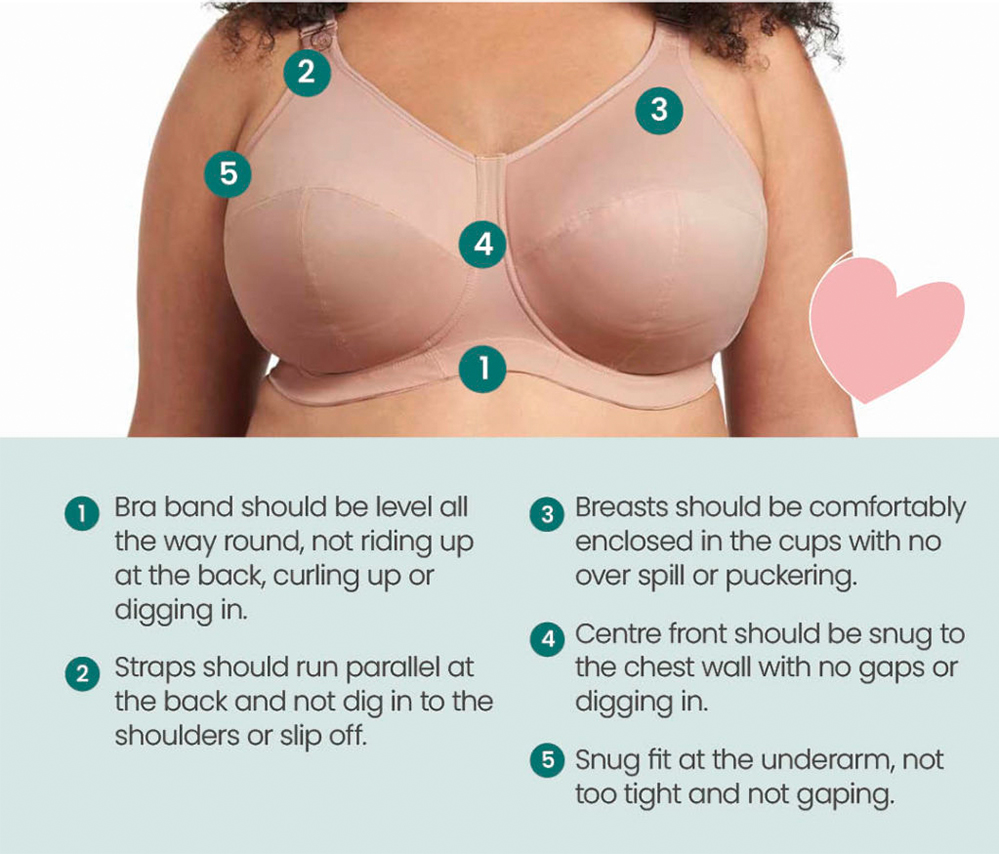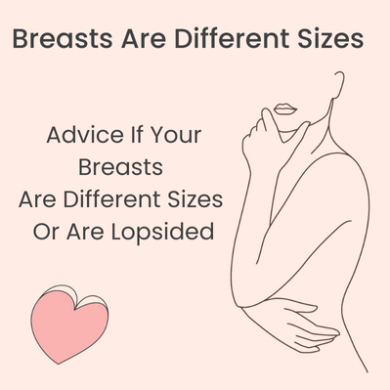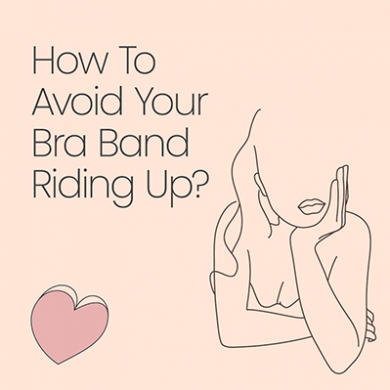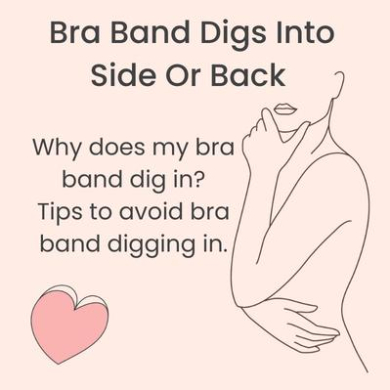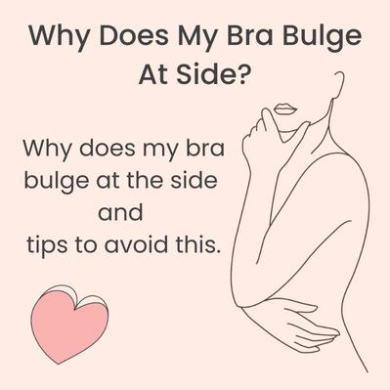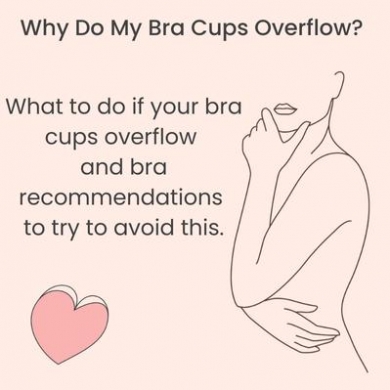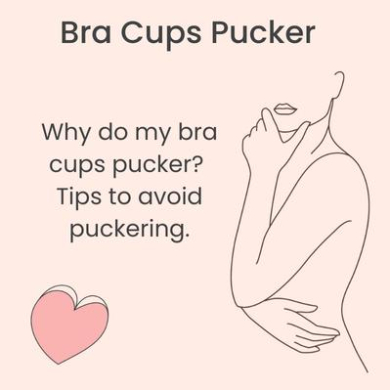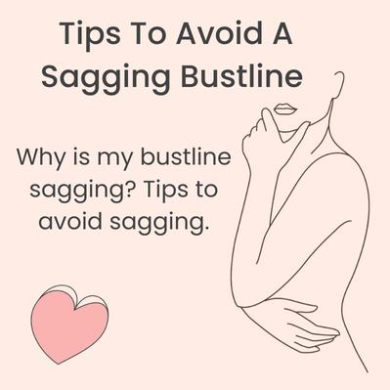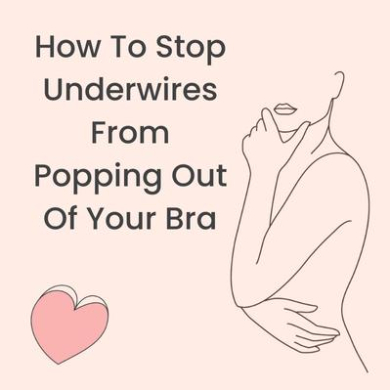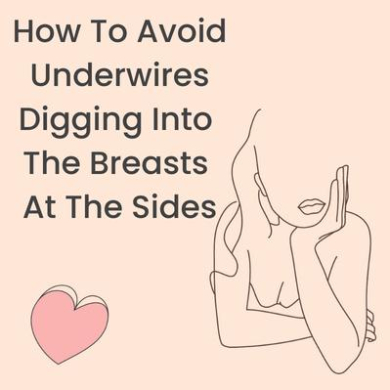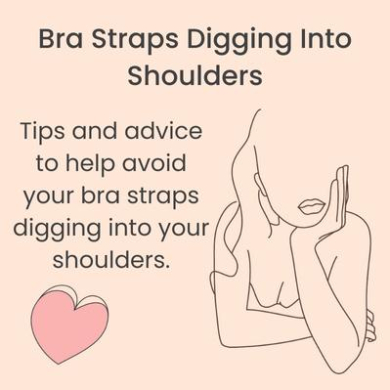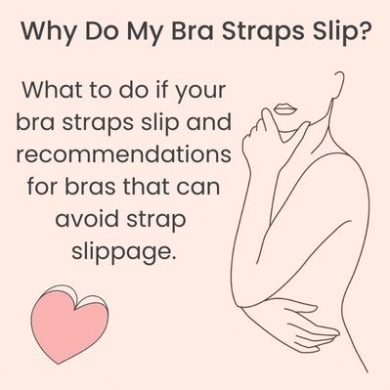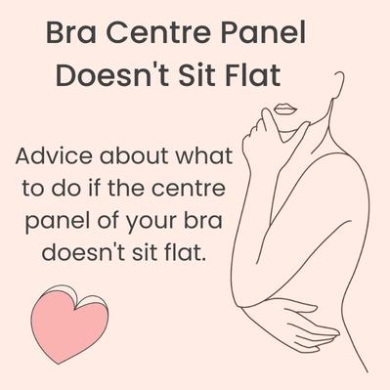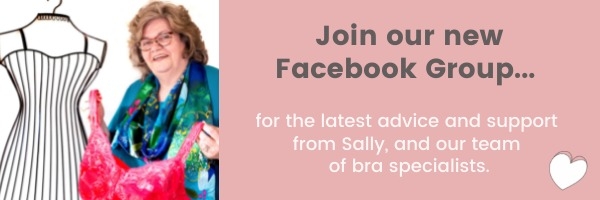AmpleBosom's Bra Fitting Guide: Tips To Find The Perfect Fit
We all want a comfortable, well fitting and supportive bra for everyday wear and whatever the occasion or whatever style of bra we choose. Different brands may fit differently, but having an understanding of the right bra size for you can serve as a general rule of thumb.
There is nothing worse than wearing an ill-fitting bra with wires poking into you, straps falling off the shoulders, bulging cups and band digging in.
To avoid these bra problems and to help you find a comfortable bra we’ve created this bra advice guide which offers hints and tips from our bra specialists so you know if you're wearing the wrong bra size, and make sure your bra size fits properly so that it is comfortable and supportive.
How to Check Your Bra Fits Perfectly and Feels Comfortable
A well fitting and supportive bra will be comfortable to wear but how do you know if the bra is fitted correctly? We have put together a guide to help you find a well fitting bra.
- Band – the band should be secure and level all the way round, not riding up at the back. The band should sit snug underneath the breast tissue.
- Straps – the straps should run parallel at the back and take the weight from the shoulders. Straps should not dig into the shoulders. Adjust the shoulder straps to ensure they are neither too loose nor too tight. The straps should sit parallel at the back. When trying on a new bra always wriggle the shoulders to ensure the straps do not slip.
- Cups – breasts should be comfortably enclosed in the cups. No bulging or gaping at the top or the sides. Always make sure the nipples are centralised in the cup. Put your hand inside the cup and lift and sweep the breasts.
- Centre panel - the centre front fitting should be snug to the chest wall with no gaps or digging in.
- Underarm - snug fit at the underarm, not too tight and no gaping cups.
- Wires – if underwired the wires should lie flat. You should not be able to feel the wires when you move around and touch your toes. Stretch your arms towards the ceiling. When you bring your arms back down to your sides, the wires should not dig in.
Best Methods to Try on a Bra for the Perfect Fit
When you try on a new bra for the first time, there are a few different methods we’d recommend to test whether it’s the right fit for you.
- Put the bra on the outer most hook. A bra starts to give after being worn a few times, so you can use a tighter hook later on.
- Adjust the shoulder straps to ensure they are neither too loose nor too tight.They should sit parallel at the back.
- If the band feels too tight, try going up one band size (eg. 38 to 40)
- If the cups feel too small, try going up one cup size (eg. E to F)
- Wriggle your shoulders to ensure the straps don’t slip
- Make sure the nipples are centralised in the cup
Frequently Asked Bra Fitting Questions and Advice From Our Bra Specialists
Think you might be wearing the wrong size bra? We get a lot of questions from our customers about ill-fitting bras. Here are some of the questions we get asked the most and our advice on how to overcome these issues.
My breasts are not the same size, what should I do?
If you have breasts that are not the same size then this is not unusual, so please give our team a call on 01439 798388 and we can help fit a bra to your breasts.
Our bra specialists advise – “Fit the bra cup size to your larger breast. Try bras with stretchy or elasticated cups that will mould to your shape. Adjust the strap on the shorter side.”
What to look for –Both breasts should be comfortably encased in the cups with no bulging at the top or the sides, especially on the side with the larger bust. The straps should run parallel at the back and can be adjusted to help with the bra cup fit too.
Why does my bra ride up my back?
If the back of your bra band is riding up and sitting too high on your back then the back of the current bra band may be the wrong bra or wrong bra size for you, or the straps might be too tight.
Our bra specialists advise – “Adjust the hook and eye closure to adjust the band size, loosen straps or try a different band size.”
What to look for – The band should be firm and level all the way around the body. Fasten a new bra on its outermost hooks so that you can tighten it if it stretches over time. Straps need to be adjusted to support the weight of your breasts and the straps should run parallel at the back.
Why does my bra curl up under the bust?
If your bra curls up under the bust it usually means the band size is too small.
Our bra specialists advise – “Try a larger back size, avoid deeper bands and consider an underwired style.”
What to look for – The band should be firm and level all the way around the body. The centre panel should sit comfortably against the chest wall.
Why does my bra band dig in?
If your bra band digs into your side/back it could be the bra band fit is too small.
Our bra specialists advise – ” Try one band size larger (40 instead of 38), this may mean you need a smaller cup size. Alternatively, opt for a bra with a wider band.”
What to look for – The band should be firm and level all the way around the body as it makes up for more than 80% of the entire bra support. Make sure the underband sits under the breast tissue. Fasten a new bra on its outermost hooks so that it’s not too tight. A cushioned band can give comfort.
Why does my bra bulge at the sides?
If your bra bulges at the sides it could be the bra band is too narrow. Alternatively the bra band could be too small or the cup size is too small.
Our bra specialists advise – ” Try a larger band size (40 rather than 38) or try increasing the cup size by one letter or choose a style that provides more cup coverage.”
What to look for – The band should be firm and level all the way around the body and the breasts should be comfortably encased in the cup. Underarm tissue should not spill over the band in the right size.
Why do my bra cups overflow?
If your breasts bulge and spill out of your bra this can indicate that the cup size is too small for you or your bra may be cut too low for the size of your breasts.
Our bra specialists advise – “Increase the cup letter size by one. Try a cup size larger (E to F). Choose a full cup or fuller shaped bra that gives more coverage rather than a balcony shape or a plunge bra. Try a bra with a higher centre gore to ensure the bra fits correctly.”
What to look for – In the right bra size, breasts should be comfortably encased in the cups.
Why do my bra cups pucker?
If your bra cups pucker or wrinkle at the tip then the bra cup could be too small.
Our bra specialists advise – “Try a bigger cup size, adjust the bra straps or try a balcony style bra. Put your hand inside the cup and lift and sweep the breasts so the nipples are centralised and your breasts are fully encased in the cups.”
What to look for – Breasts should be comfortably encased in the cups and straps should run parallel at the back. Always make sure the nipples are centralised in the cup.
Why does my bustline sag?
If your bustline sags then your bra straps and band may be too loose and the style of bra may need changing.
Our bra specialists advise – “Try shortening the straps and avoid stretchy fabrics. Choose a firmer support style bra with rigid straps and cups with more sections as this will give more support. Check the band size is not too big.”
What to look for – You should be able to place one finger under the straps comfortably, the breasts should be encased in the cups comfortably and the band should be firm and level all the way around the body.
Why do the underwires poke out at the front?
If the underwires poke out at the front of your bra then your bra band may not be the correct size, if the band is too small the wires can poke out at the front and if the band is too large, the band moves which can cause the wires to pop out over time.
Our bra specialists advise – “Try changing your band size. You could also increase the cup size (E to F). Alternatively try a non-wired soft cup style.”
What to look for – The underwires should lie flat and the band should be level all the way round with the breasts resting comfortably in the cups.
Why do the underwires dig in at the side of the breasts?
If the underwires dig into your breast at the side then your bra cup size could be too small.
Our bra specialists advise – “Try increasing the cup size (E to F). Alternatively try a non-wired, non-padded bra style.”
What to look for – The underwires should lie flat and the breasts should be encased comfortably inside the cups and wired area. Different bras can have different shaped wires and bras with a shorter or flatter underwire won’t dig into the sides of the bust.
Why do my bra straps dig in and make my shoulders are sore?
Bra straps can dig into the shoulders and make them sore if the bra straps are too tight and your straps are not supporting the weight of your breasts. Also consider the cups size and style, if the cups are too small they can put pressure on the shoulders and a fuller cup style will fully encase the breasts giving them good support.
Our bra specialists advise – “Loosen the bra straps or opt for a bra with wider, or padded cushioned straps. Try going up a cup size or a fuller cup to support the breasts. You may need a more supportive bra, look for one with side support panels and side bones.”
What to look for – You should be able to place one finger under the straps comfortably so they are not too tight or too loose. The cups should be supporting the breasts so make sure they are fully encased. You may need a more supportive bra, look for one with fuller cups, plus side support panels and side bones.
Why do my bra straps slip off my shoulders?
If your bra straps slip then the straps could be too loose, the cup size could be too small and back size too big.
Our bra specialists advise – “Check straps are adjusted so not too loose, check hook fastening is on the middle hook, choose a bigger cup size. If you have narrow shoulders, choose a bra style with straps closer to the neck as opposed to the shoulder. Look for a racer back style or a bra with a j hook so that you can make a centralised strap.”
What to look for – Straps should run parallel at the back and if you fasten your bra on the middle set of hooks, this aligns the straps correctly for maximum comfort. You should be able to place one finger under the straps comfortably so they are not too tight or too loose. The straps need to sit comfortably between the neck and shoulders. Some bras have centre pull straps that help prevent the slipping.
Why does the centre panel of my bra gape and not lie flat?
If the centre panel of your bra gapes and does not lie flat then your bra cup may be too small and band size too big.
Our bra specialists advise – “Try increasing the cup size and reducing the band size. Also try a stretchy fabric on the bra.”
What to look for – The centre panel should sit comfortably against the chest wall and there shouldn’t be skin on skin.
Why does my bust come out at the bottom of the bra?
Sally says, “If your breasts are coming out at the bottom of your bra,it could be something as simple as not putting your breasts correctly in the cups. Take your time and ensure you have done that first. If your bust is still coming out at the bottom of the bra, this could be a sign that your back band is too big and the cups are too small. Try a smaller back size and a bigger cup size, and make sure your back band is firm and level all the way round, with your breasts comfortably encased in the cup. Ensure your nipples are centralised - there should not be skin on skin.”
Why do the underwires dig into my ribcage?
If the underwires dig into your ribcage then your bra may be too small.
Our bra specialists advise – “Try a larger band size so that the wires don’t dig in.”
What to look for – The wires should lie flat, look out for a cushioned wire for extra comfort.
Why does my bra give me an East-West shape?
Sally says, “Some traditional bra styles may give you what’s known as an East-West shape, which can make you look wider. These bras are still popular, and some of our favourites are the Triumph Doreen and the Anita Comfort Jana. However, if you want to avoid this shape, a bra with side support will give your breasts a forward-facing shape, helping you to look slimmer.”
Which bra fabric is best for sensitive skin?
If you have sensitive skin or have any of the following conditions - eczema, psoriasis, hidradenitis suppurativa or fibromyalgia then please get in touch as we can help you find a cotton bra or bra with soft, hypoallergenic fabric for sensitive skin so that the fabric doesn't irritate your skin.
Have you got a question we haven’t answered? Get in touch with our helpful team of bra specialists on 01439 798388.
When should I have a bra fitted?
Experts recommend that women should have a bra fitted regularly. There are a number of occasions in a women’s life when you should consider having a bra fitting:
- During pregnancy.
- After pregnancy.
- When you lose weight.
- When you gain weight.
- When undertaking an exercise regime.
- After any type of surgery that may increase or decrease the size of your breasts.
- When your bra feels too small.
- When your bra feels too big.
We offer bra fitting appointments here in North Yorkshire. Give us a call on 01439 798 388 and we can arrange a day for you. Our bra fitting specialists are here to help, offering friendly and supportive advice to help you choose a well fitting and comfortable bra.
Alternatively, we are always happy to offer help and advice over the phone if you can't make it to us here in Old Byland, so give us a call on 01439 798388 or email us here, and our team will be happy to help.
More Frequently Asked Bra Fitting Questions
- How do I fit a plus size bra properly?
- How do I get a perfect fitting bra?
- How do I measure my bra size?
- What makes a bra comfortable?
- Do you have a bra fitting question for us?
- What do I do if my bra is getting tight during the day or by the evening?
- What should I do if my bra is uncomfortable or causing discomfort?
- How do I choose a bra if my breasts are not the same size?
- What happens at a bra fitting?
- What are sister bra sizes?
Find Your Perfect Fitting Bra at AmpleBosom
At AmpleBosom, we’re here to help you find the perfect fitting bra. If you need further assistance, our friendly team of specialists can give you bespoke advice on how to find a well-fitting, comfortable, and supportive bra. We’ll share our expertise on finding the perfect bra for you and give answers to common bra fitting problems, plus any other queries you might have. To get in touch, give us a call on 01439 798388 or visit our Facebook page.
Stay updated with our weekly newsletter for the latest news, advice, and reviews.
Updated by AmpleBosom 22/04/2025.



